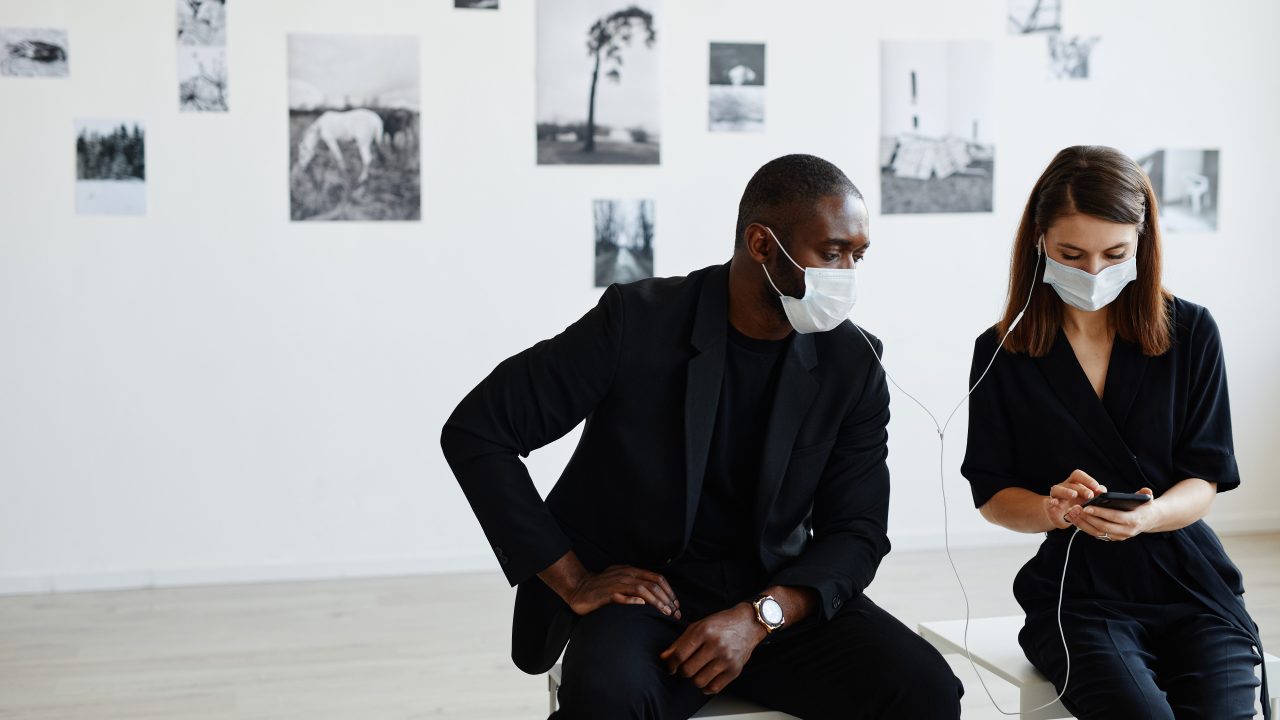
As a result of the COVID-19 pandemic, museums everywhere have become more people-centric. Top-line conversations have centered on the thoughts and feelings of our visitors as we have reopened under new safety standards and societal norms. For those of us working on the frontlines of museums, this has been especially crucial. Unlike many others, we have not been able to take a “wait and see” approach to living in the post-pandemic world, as we have had to make concrete and immediate decisions about how to operate in our evolving environment every day. Not in our wildest dreams would we have fathomed two years ago the situation we are currently in. There is very little literature and few if any best practices to draw on. And so, we must come up with what we believe to be the best way to serve our audiences and get back to the important work of supporting our missions and visitors.
Because there have been no definite answers to operating under these new conditions, I wanted to get a fuller picture of how other experience professionals have developed their post-disaster action plans. So, I spoke to people doing this work on the front lines around the country. While everyone I interviewed expressed relief and gratitude that their visitors were beginning to return, they also emphasized a need to pivot, flex, be agile, and tighten up—all verbs I recognized as the tenets of our reality over the past two years. Synthesizing what they shared with me, I captured four main ideas they have leaned on:
1. Focus on care, concern, and comfort.
The aftershocks of the pandemic, much like those of any other disaster—environmental, social, or otherwise—have left us uncertain. These times have been unnerving to us all, but as safe spaces and havens for harboring a sense of community and belonging, museums have a responsibility to remind those who sustain us that we can sustain them too.
This was what the Natural History Museums of Los Angeles set out to do when they reopened their outdoor areas, including their nature and butterfly gardens, after a five-month whole-organization closure at the start of the pandemic. The museums’ Director of Guest Experience, Daniel Stewart, says visitors were palpably relieved to be able to come back, and surveys showed the team’s efforts helped them feel safe while doing so. “It almost seemed therapeutic for them to be able to participate in a beloved pre-pandemic activity,” Stewart reflects, “and on the front-line, we directly affected those feelings by adhering to the current best practice safety standards.”
Stewart says the museums also showed support to their dedicated supporters by pausing their membership program during the months of closure, to minimize the feeling of missing out on anything. Reaching out with support, rather than marketing messages or requests for money, can be a critical message coming off of such a tough time. The time for “selling” your visitors something is not during a closure or mid-pandemic. At that juncture, the aim is to remind your constituents that you care. The past two years have been an excellent reminder to sell less, support more.
2. Meet your visitors where they are.
In today’s world, we cannot just think of the museum as a “repository of things.” To fulfill our missions, we must consider how we can meet the people who use that repository where they are. This could mean physically, as in bringing museum content and programs to them, or mentally, as in serving as a place of magnificent distraction—precisely what many of us need right now.
One museum that has learned to meet visitors where they are is the Denver Museum of Nature & Science. During the pandemic, the museum switched to an online timed ticketing reservation system, and staff found it improved visitor experience in multiple ways. One involved limiting the number of visitors arriving at one time. “We have a somewhat small welcome area, and it could feel overwhelming when large numbers arrived at once. By pulsing visitors in at specific times, we can better control the flow and allow more time to greet visitors,” Stephanie Wood, the museum’s Director of Guest Services, told me. The system also changed how they conducted visitor surveying. They had traditionally used in-gallery intercepts, but since they could capture email addresses through the reservation system, they switched to post-visit electronic surveys. Overall, they found this produced deeper insights and a broader understanding of their visitors’ thoughts. They have since gone back to surveying in-gallery, but Wood say they may eventually reinstate electronic surveys again in addition.
3. Reimagine a post-COVID world.
Many museums had limited resources before the pandemic closures, and now they have returned from those closures (if they have returned) with only more constraints than before, and more demands on top of it. Digital resources are more in-demand, for instance, as are staff who know how to effectively use those digital resources. We may never go back to being a society dependent on physical contact, and so new ways of utilization have become necessary. All this means that flexibility and ingenuity have never been more important. It will take novel solutions to stretch limited resources into expanded experiences.
One example of such a novel solution comes from Space Center Houston. For visitors to the museum, Guest Experience Director Chance Sanford explains, a popular experience is to take the NASA Tram Tour to visit the NASA Johnson Space Center. Pre-COVID, visitors queued for the tram in traditional serpentine fashion, but after reopening, staff realized it would be a challenge to continue this practice under new physical distancing norms, so they decided to develop a virtual queue system to replace it. In the process, they discovered that not only did this solution provide a safer way for visitors to wait to board, but it also positively affected the length and quality of their stay, because they were now free to roam the exhibits while waiting their turn, rather than spending a portion of their visit waiting in line. Especially in the pandemic era, people have become accustomed to the idea that digitization can get you want you want faster (for example, grocery delivery services and next-day delivery on Amazon), so why would visitors expect to physically queue? The use of technology has shown us that there is no need to waste time in a line.
4. Build agile capabilities for fluid times.
Throughout the pandemic, norms and expectations have fluctuated, and keeping up with them has required agility. In visitor experience, this means seeking out regular updates on how visits are transpiring: tapping social media and evaluation platforms like Trip Advisor and Yelp for quick and transparent guest reads, soliciting boots-on-the-ground insight from front-line employees, and paying attention to signs of failure and reevaluating the way you are proceeding often.
One way we are staying agile at the Tampa Bay History Center is using self-service kiosks, similar to the ones you might have seen at the supermarket or drugstore. We think of these kiosks not as a means to replace human interaction, but to complement it, and a support to lean on during fluid times. With them in place, we’re ready to accommodate physical distancing and stretches when a visitor’s preference may be to interact with technology instead of a person. Agility is defined as the ability to move, think, and understand quickly, and self-service kiosks accomplish just that. They give museum front-line staff the ability to better allocate their time based off of visitor need and desire.
Post-disaster, as in regular times, visitor experience work will lead to a few negative interactions, since front-line museum employees often bear the brunt of frustrations and anxiety. There are “help wanted” signs everywhere you look right now, as front-line workers in all industries have been pushed to the brink of human endurance. The “Great Resignation” is affecting museums, restaurants, retail stores, and pretty much any outlet that serves people. Many places are posting signs in guest-facing areas urging patrons to “be patient with those who showed up” because they can’t afford to lose any more workers to abusive customers—not exactly the prettiest picture of our new normal, but accurate in many cases, and a good reminder of just how valuable our front-line is.
Through it all, each day brings an opportunity to learn more, and although the COVID-era reality has been volatile, it has brought on an essential reminder of the benefits of agility and flexibility, and perhaps most importantly, it has underlined that for museums, people are one of the most important assets they have the responsibility to protect.








